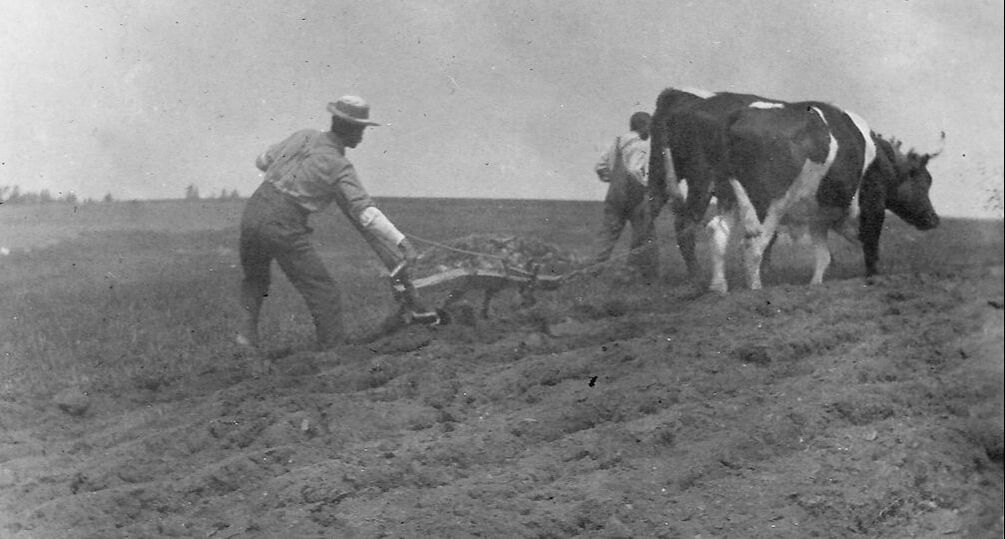FROM THE GROUND UP
The history of farming on North Haven begins in the ground. Over the course of a geologic timeline that began 545 million years ago, North Haven’s bedrock took shape. Known primarily as North Haven Greenstone, the rock differs from the granite outcrops commonly found on nearby islands. Compared to granite, greenstone is more susceptible to the forces of weathering. As a result, the island’s bedrock has, over thousands of years, broken down more easily into soil.
North Haven’s soil is also composed of the weathered remains of glacial deposits, left behind by the last glacier that covered this region over 15,000 years ago. The massive sheet of ice, over a mile thick, pressed down on the landscape and pushed along soil, gravel, and rocks of all sizes. When the earth’s climate warmed, the glacier began to melt and it released all the material it carried. The melting glacier also caused the ocean level to rise and cover North Haven and eventually two-thirds of the state of Maine in sea water. Through the ocean currents, silt and clay slowly settled down across the submerged land and collected alongside the glacial deposits. Areas of clay on North Haven are a sign of its past life at the bottom of the ocean.
Gradually, the submerged land began to rebound from the glacier’s weight and the sea level dropped to expose the Maine coast. In the thousands of years since, the factors of soil formation have slowly been at work breaking down North Haven’s bedrock and glacial deposits. That process created the island’s dominant soil type, known as Tunbridge-Lyman, defined as a fine, sandy loam. Some regions of the island have soils classified by the United States Department of Agriculture as prime farmland along with significant areas of soil suitable for hay and pasture.
North Haven’s geology and its gift of good soil went on to shape the island’s settlement, community, economy, and people’s entire way of life. From the ground up, the soil became the basis for North Haven’s long history of farming.
North Haven’s soil is also composed of the weathered remains of glacial deposits, left behind by the last glacier that covered this region over 15,000 years ago. The massive sheet of ice, over a mile thick, pressed down on the landscape and pushed along soil, gravel, and rocks of all sizes. When the earth’s climate warmed, the glacier began to melt and it released all the material it carried. The melting glacier also caused the ocean level to rise and cover North Haven and eventually two-thirds of the state of Maine in sea water. Through the ocean currents, silt and clay slowly settled down across the submerged land and collected alongside the glacial deposits. Areas of clay on North Haven are a sign of its past life at the bottom of the ocean.
Gradually, the submerged land began to rebound from the glacier’s weight and the sea level dropped to expose the Maine coast. In the thousands of years since, the factors of soil formation have slowly been at work breaking down North Haven’s bedrock and glacial deposits. That process created the island’s dominant soil type, known as Tunbridge-Lyman, defined as a fine, sandy loam. Some regions of the island have soils classified by the United States Department of Agriculture as prime farmland along with significant areas of soil suitable for hay and pasture.
North Haven’s geology and its gift of good soil went on to shape the island’s settlement, community, economy, and people’s entire way of life. From the ground up, the soil became the basis for North Haven’s long history of farming.
